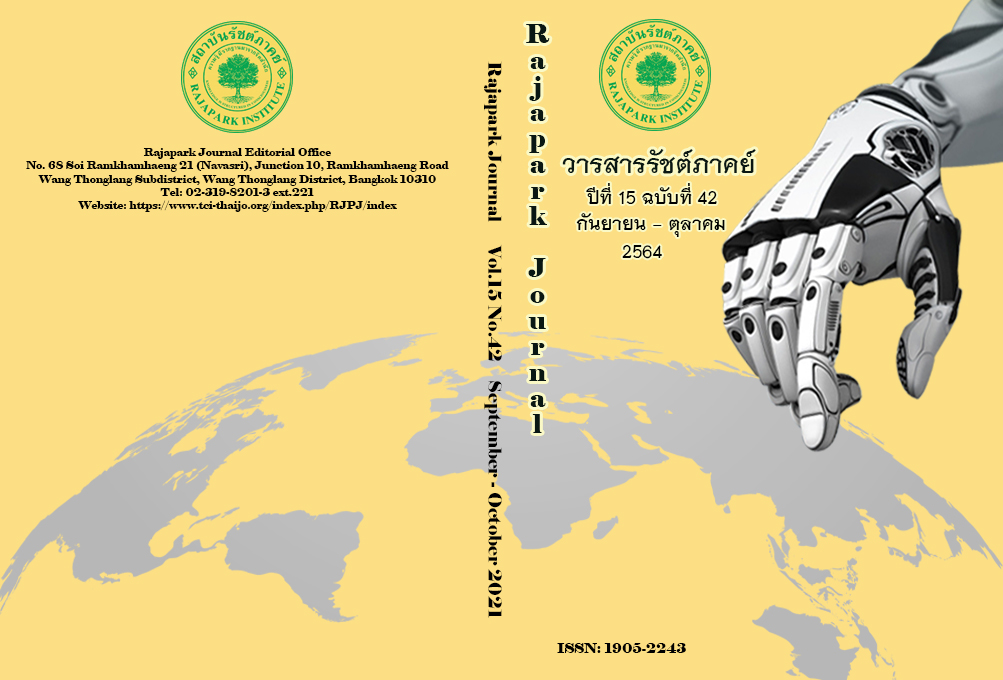Approaches to Increase the Cultural Capital Potential to Promote Community Product Development: A Case Study of the Lad Yai Herbal Salt Community Enterprise in Samut Songkhram Province
Main Article Content
Abstract
The purposes of this study were to analyze the cultural capital potential of the Lad Yai Herbal Salt Community Enterprise in Samut Songkhram province of Thailand and present an approach to develop the products created from cultural capital accumulated within the Lad Yai community. This qualitative research was gathered data from a literature review, in-depth interviews, and a focus group selected from a sample of representatives who have the potential to develop cultural capital. It was found that the internal capital of the enterprise is well ready, but what requires the most urgent support is marketing. Concerning approaches to develop their products, the enterprise should diversify their products and make them appropriate for daily usage. This research also suggested integrating the selling points of the cultural capital of salt farming into the community products and applying this identity to increase demand and add value.
Article Details
Views and opinions appearing in the Journal it is the responsibility of the author of the article, and does not constitute the view and responsibility of the editorial team.
References
Bourdieu, P. (1993). The Field of Cultural Production: Essays on Art and Literature. New York: Columbia University Press.
Chankong, J. (2019). Chairman of Lat Yai Herbal Salt Community Enterprise Group. In-depth Interview. December, 19.
Department of Agricultural Extension. (2018). Sub-district Agricultural Development Plan 2018-2021. Retrieved April 15, 2020, from http://mueang.samutsongkham.doae.go.th/2014/images/2017.pdf
Griswold, W., & Wright, N. (2004). Cowbirds, Locals, and the Dynamic Endurance of Regionalism. American. Journal of Sociology, 109(6), 1411-1415.
Kusiyarungsit, A. (2017). Story Telling Technique in Marketing Communication for OTOP Products. Journal of Population, 5(1), 85-105.
McKercher, B., & Du Cros, H. (2002). Cultural Tourism: The Partnership Between Tourism and Cultural Heritage Management. Routledge.
Ministry of Culture. (2019). Value Culture to Economic Value. Retrieved April 20, 2020, from http://www.culture.go.th/culture_th/ewt_news.php?nid=3972&filename=index
Patamasiriwat, D. (2006). Survey of Knowledge Status and Ways to Develop Cultural Capital and Cultural Villages (Homestay) Mukdahan Province (Master's Dissertation). Mahasarakham University.
Pholphirul, P. (2013). Creative Economy and Development Issues in Thailand. NIDA Economic Review, 7(1), 2-69.
Sudsanguan, R. (2019). Member of Lat Yai Herbal Salt Community Enterprise Group. In-depth Interview. December, 20.
Thailand Creative and Design Center. (2018). Creative Economy in Action. Retrieved April 24, 2020, from https://web.tcdc.or.th/en/Articles/Detail/CreativeEconomyinAction
Thanapornpun, R. (1997). Cultural Capital. Bangkok: P. Press.
UNESCO. (2004). Preliminary Draft of a Convention on the Protection of the Diversity of Cultural Contents and Artistic Expressions. Retrieved April 11, 2020, from https://unesdoc.unesco.org/ark:/48223/pf0000135649


